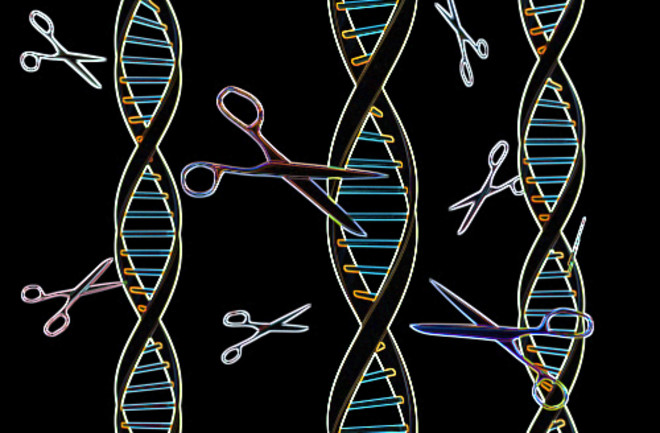Genetic Scissors: Editing the Genome with CRISPR
by Laasya Aki

Cutting genes - Discover Magazine
Modifying genes in cells used to take up years, but with genetic scissors, that process can be shortened to a few weeks. Modifying and snipping genes is useful for a lot of reasons. We can remove a genome that causes a disease or illness before a baby is born. We can breed different plant species to find the perfect combination of multiple types. We can also eliminate diseases and viruses in plants. There are so many different things we can do, but modifying genes isn’t always an option because of how long it takes and how much it can cost. The older methods weren’t as precise either. However, we can now snip and edit DNA in just a few weeks.
CRISPR is a tool that is used for editing and snipping the genome. Scientists can replicate DNA and edit DNA sequences, a process that took so long before this discovery was made. Emmanuelle Charpenteir and Jennifer Doudna discovered CRISP, one of the sharpest tools which can snip DNA. The CRISPR/Cas9 scissors allow scientists to change the DNA of many different organisms with extreme precision. This new tool allows us to edit DNA with precision that we have never seen before. These scissors have revolutionized science and will help lead to groundbreaking medical discoveries and treatments. Editing DNA at this level gives scientists even more freedom to explore genes. This amazing discovery changed science for the better, but it also had a huge impact on society.
Charpenteir and Douda are the first all-female recipients of the Nobel Prize. Their discovery took place in 2012, and they finally got recognition eight years later. This shows that their hard work and dedication paid off, and CRISPR will forever be changed for the better because of their discovery.
~ Written by Laasya Aki
~ Edited by Rita Dwivedi
References:
- https://www.nobelprize.org/prizes/chemistry/2020/press-release/
- https://www.nobelprize.org/uploads/2020/10/popular-chemistryprize2020.pdf
This article was originally published at the Teach-Technology Organization, Inc. online technology blog. I volunteer as a tech blog writer at this organization, which is dedicated to bridging the gap between seniors and technology. You can read this article (and many more) at the Teach Technology site.
tags: TeachTech - technology